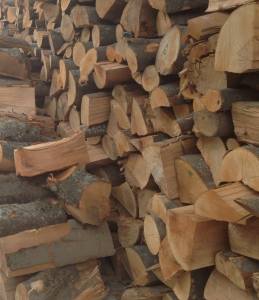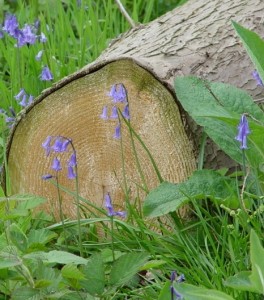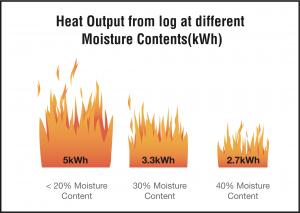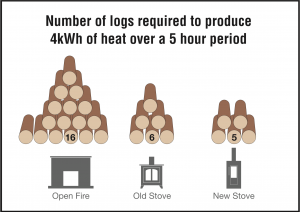
Firewood
What a product! Made from the sun and providing humans with heat since we learnt how to rub 2 sticks together. An environmentally friendly and abundant resource if managed correctly. When burnt it is considered carbon neutral. This means that the same amount of carbon is released whether you burn it or leave it to rot in the ground. However, if it’s burnt prematurely before it’s allowed to dry out or “season” – it is a bad choice for fuel and is causing a negative environmental impact. In fact, burning a log that is not properly seasoned has been proven to be detrimental to air quality.
What is “Seasoned” wood?
A tree has water running through its “veins” allowing it to grow. When it is felled, the water remains inside it and over a long time will eventually seep out leaving the wood to dry out. This moisture content can be measured.
Seasoned firewood refers to how dry the logs are. So if the logs are cut, stored correctly and allowed to dry, a well-seasoned log should have 20% moisture content or less.
This means that when placed on a fire, you will get immediate heating benefits from it.
What is “Kiln dried” wood?
Firewood suppliers will often give you the choice of buying logs that are either “seasoned” or “kiln dried”. Kiln dried logs are more expensive. They have been through a kiln that speeds up the process of seasoning or drying out the log. Kiln dried logs have a moisture content below 20% and is often between 10-20%.
This ensures that the log you buy is much more efficient and will give off immediate heat as opposed to using a “Green log”.
What is Green wood?
“Green” wood refers to how “wet” a log is. The greenest logs are those that have just been cut therefore are considered to have the most moisture content – between 60-80% water content. However, depending on the type of wood, the moisture content will change. For example, ash has less moisture content than pine when first cut. Consequently, it dries out faster. The longer wood is left to dry the less moisture content it has and the easier it will be to burn.

Burning a wet log is bad for 3 reasons
Reason 1:
If you use a wet log on a fire, it will spit and crack as the heat attempts to dry out the log. Most of the energy will be spent drying out the log so that when it is finally dry and ready to give off heat, there won’t be much energy left in the log to actually give off heat. This is a complete waste of money.
Reason 2:
Furthermore, burning green logs has been proven to be very bad for the environment, in particular, air quality as particulate matter is released.
Reason 3:
In the process of drying out logs during combustion, an adverse effect occurs and a sticky tar-like substance called creosote is produced. This substance tends to stick to your flue decreasing its diameter and preventing the effective passage of the fires’ waste products as they are expelled into the atmosphere. Thus you are more susceptible to CO poisoning. Creosote is also flammable so the risk of a chimney fire is considerably increased.
Summary:
In summary, you’re polluting the air, destroying your expensive stove and flue system, and throwing money away by burning wet wood. Just don’t do it! You might as well throw water on your stove.
Here are some good wood facts
- If you burn a log with a 40% moisture content and then burn one with a moisture content of 20%, you’ll produce nearly twice as much heat from the log with the lesser moisture!
- In order to produce 4Kw of heat, an open fire will need 16 logs, an old stove (about 10 years) will need 6 logs and a new EcoDesign Ready stove will need 5.


- To “season” or dry a log out, it will completely depend on the species of the tree and how it is stored; Ash in the right conditions can take 12 months whereas Oak can take more than 36 months! – that’s 3 times as long!
- You should also avoid burning treated or glued wood (such as MDF, ply and chipboard) as these produce pollutants and poisonous gasses. Driftwood releases salt which damages the components of your stove and flue.
Don’t take our word for it – check out what Burnright have to say about wood.

Sophia
Love it, it’s so true!
Wish more stove clients would read this, poorly seasoned logs is false economy!
Very well written!